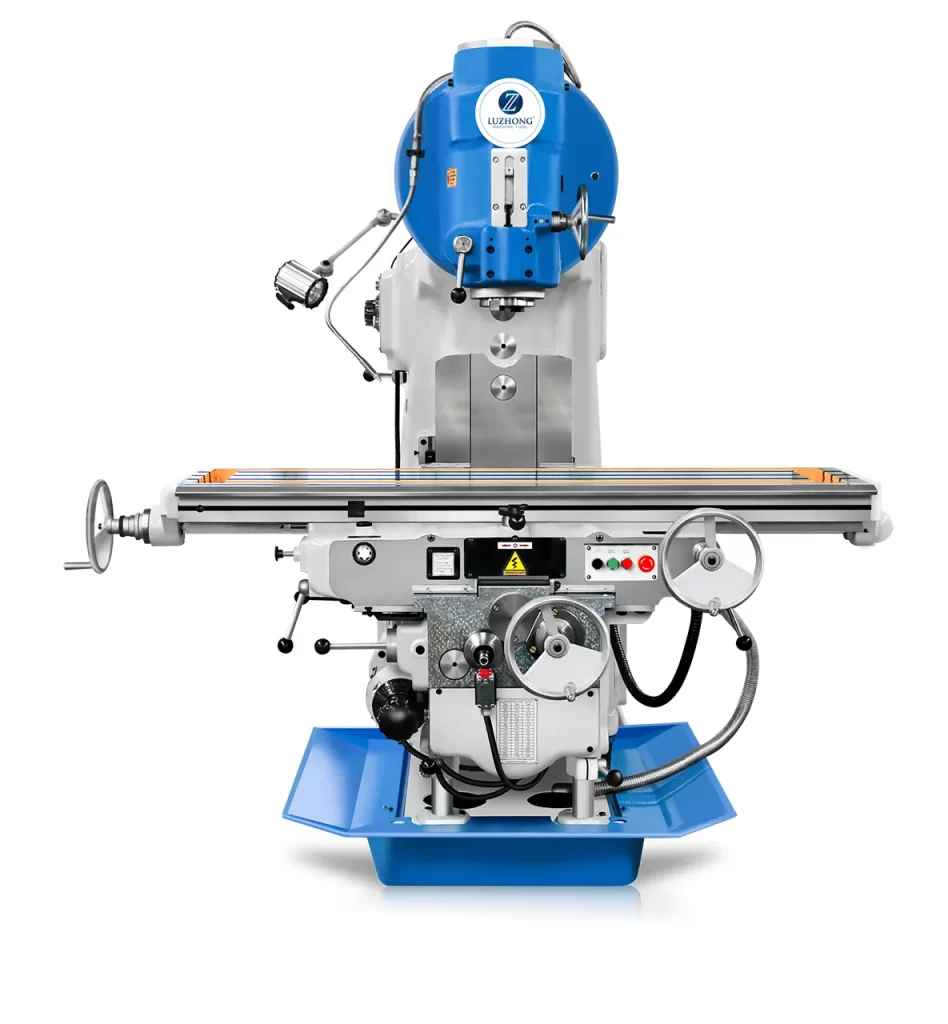Versatile Tools for Precision Machined Parts
What is Milling Machine?
A milling machine is a power-driven tool to achieve material removal. It has a stationary worktable, a spindle holding the milling cutter, and various controls to move the workpiece and cutting tool.

What Can A Milling Machine Do?
Usually the rotary motion of the milling cutter is the main motion, and the movement of the workpiece and the milling cutter is the feed motion. Milling machines can process planes, grooves, gear, and various curved surfaces, etc.
What is a Milling Machine Used For?
Milling machines are used for a wide range of applications, including:
– Flat Surfaces:
They excel at creating flat surfaces on workpieces, like base plates, mounting brackets.
– Contoured Parts:
Milling machines can produce workpieces with complex contours and shapes, like curved panels, mold cavities.
– Holes and Slots:
A milling machine is commonly used for drilling holes and cutting slots.
– Threads:
Milling machines can produce internal or external threads on workpieces, like threaded holes, fasteners, or threaded components.
– Prototypes and Models:
Milling machines are widely used in prototyping and model-making processes.
– Dies and Molds:
Milling machines are essential to produce dies and molds for casting, forming, or injection molding process.
– Customize Components:
Milling machines provide the flexibility to create customized components tailored to specific requirements.
– Engraving and Marking:
Milling machines can perform engraving and marking operations on workpieces for adding logos, serial numbers, labels, etc.
What are theTypes of Milling Machines?
Milling machines can be classified into various types based on their structure and functionality, including:
– Bench Milling Machine:
Also called as benchtop milling machine, it is a small-scale milling machine on a workbench or tabletop. It is used for small parts machining.
– Open-Side Type Milling Machine:
The machine has a wide-open design, typically with the bed of the machine exposed on one side. It allows for the milling of larger workpieces.
– Ram Type Milling Machine:
With a movable spindle mounted on a ram, these machines offer flexibility in reaching different positions.
– Planer Type Milling Machine:
Ideal for heavy-duty milling operations, planer type machines have a large table. It is perfect for milling large workpiece.
– Plain Milling Machine:
It is a basic milling machine with a fixed spindle for machining flat and formed surfaces.
– Copying Milling Machine:
Known as free-form milling, it is designed to reproduce the shape or contour of a template or model. It is ideal for processing complex shape workpieces.
– Knee-and-Column Milling Machine:
Also called variable-speed vertical milling machine, it has a vertically adjustable worktable supported by a knee that moves along the column.
– Milling Tool Machine:
Known as Universal Milling Machine, it performs various operations from boring to shaping. It can be used for gear milling or thread milling.
–Bed Type Milling Machine:
This kind of robust machine has a fixed bed for stability and can handle heavy workpieces.
– Special Type Milling Machine:
It offers high machining precision and can handle complex shapes. For example, a milling machine for machining tool and mold.
What are the Main functions of A Milling Machine?
1.Point Control Function
This function can realize the hole system machining which requires high precision of mutual position.
2.Continuous Contour Control Function
This function can realize the interpolation function of straight line and arc. It also can realize the processing of non-circular curve.
3.Tool Radius Compensation Function
This function can be programmed according to the dimension size of the part drawing without considering the actual radius size of the tool used, thus reducing the complex numerical calculations for programming.
4.Tool Length Compensation Function
This function can automatically compensate the length of the tool to adapt to the requirements of the tool length and size adjustment during processing.
5.Proportion Function
The proportion function can execute the programmed machining program by changing the coordinate value according to the specified proportion.
6.MirrorMachiningFunction
Mirror machining is also known as axisymmetric machining. If the shape of a part is symmetric about the coordinate axis, then only one or two quadrants are programmed, and the contours of the remaining quadrants can be achieved through mirror machining.
7.Rotation Function
This function allows the programmed machining program by rotating at any Angle in the machining plane.
8.Subroutine Call Function
Some parts need to repeatedly process the same contour shape in different positions. The processing program of this contour shape is used as a subroutine and repeatedly called in the required position to complete the processing of the part.
9.Macro Program Function
The function can use a total instruction to represent a series of instructions to achieve a certain function, and can operate on variables, so that the program is more flexible and convenient.
How to ChooseA Milling Machine for Precision Parts Manufacturing?
Choosing the right milling machines for precision machining parts, we have to consider factors such as the size and type of workpiece, the required precision, the complexity of the desired shapes, and the available budget.
